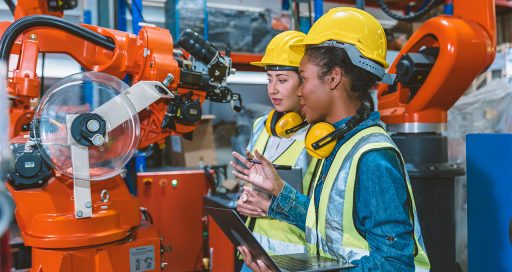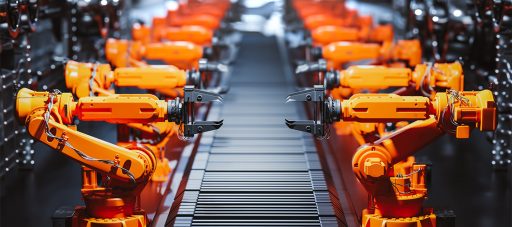Thanks to virtual reality, digital technologies are now coming into play early on in the vehicle and production line design process. This article looks at examples in the automotive industry.
![]()
On 16 August 2019, Bugatti unveiled its latest creation, the Centodieci. Not only does it offer exceptional features, but this new luxury car from the renowned manufacturer, a Volkswagen group subsidiary, was designed in just 6 months.
So what’s Bugatti’s secret? In fact, the design methods of this variant of the Chiron, the brand’s most powerful super sports car, are based to a large extent on virtual reality (VR). The technology, which is perfectly suited to the production of limited-edition vehicles (10 models in the case of the Centodieci) in record time, enabled the manufacturer to reduce design time by a factor of three.
How? Using a VR headset, a mock-up of the vehicle interior and exterior can be viewed in 3D from every angle. This means an entire team of designers and engineers can interact over the model and flag any improvements before a physical sample is ever produced.
“One possible application might involve the modification of a production line to introduce the production of a new vehicle while continuing to manufacture older models and without lowering overall throughput”
The technique saves time and money, and is of increasing interest to the automotive industry. This is seen with Volvo, among others, which is using the XR-1 headset from start-up Varjo to test various designs and systems on track, in real-world driving conditions, prior to prototypes being designed.
From virtual to real
Actemium, the VINCI Energies brand specialising in industrial processes, which operates in this emerging and promising market, is working to develop VR solutions for the automotive sector but applied to manufacturing systems.
“One possible application might involve the modification of a production line to introduce the production of a new vehicle while continuing to manufacture older models and without lowering overall throughput,” explains Stéphane Conrad, manager of the Actemium Trappes business unit.
In this scenario, thanks to a VR headset, a 3D scan of the workshop provides a comprehensive picture of the site, reflecting the actual situation. “You can even identify new parts, cable trays or networks that weren’t necessarily mentioned in the documentation,” adds Conrad, who highlights the fact that the technology helps limit on-site movement and saves time at the design stage.
A further application of VR is as a design validation tool. “Here, you don’t start off with real and move to virtual. It’s the other way round: you use virtual platforms to optimise the real future installation, for example by testing or modifying parts in relation to issues such as safety, ergonomics or access for maintenance,” points out Conrad.
Cloud database
Appointed by Renault to a robotics working group to optimise processes using simulation, Actemium is also focusing on a programme aimed at sharing projects in a virtual database in which all suppliers and the car manufacturer can pool their own designs.
“With Inventor software, this cloud-based programme enables all partners (electricity, plumbing, compressed air, etc.) to see the installation and be aware of the motion characteristics of each machine. This helps flag up any issues early on, especially in terms of safety and optimisation,” specifies Eloy Hernandez, sales director for Spain and the US at Actemium ASAS.
“It’s a way of considerably reducing lead times and costs,” adds Hernandez who also thinks that virtual reality is a “valuable tool for training operators in the use of machines.”
18/11/2020





